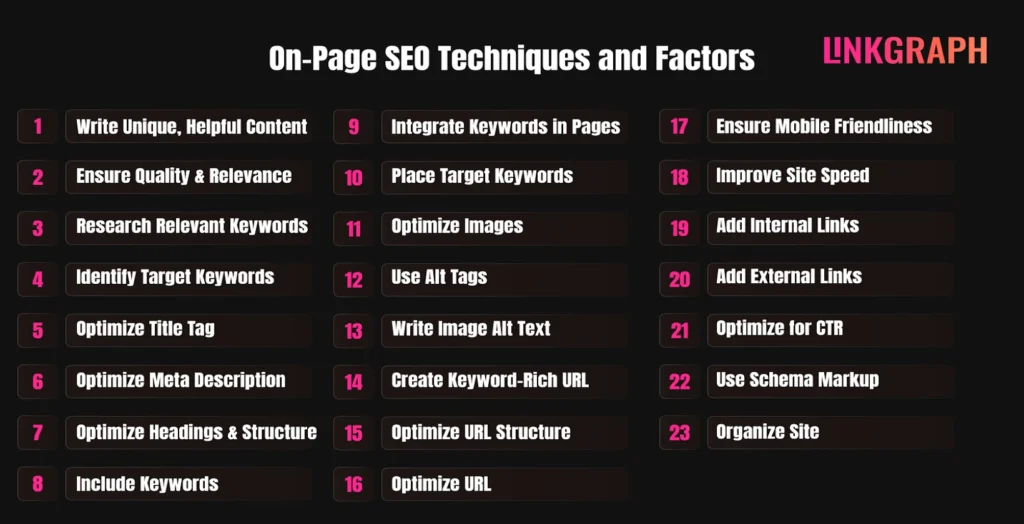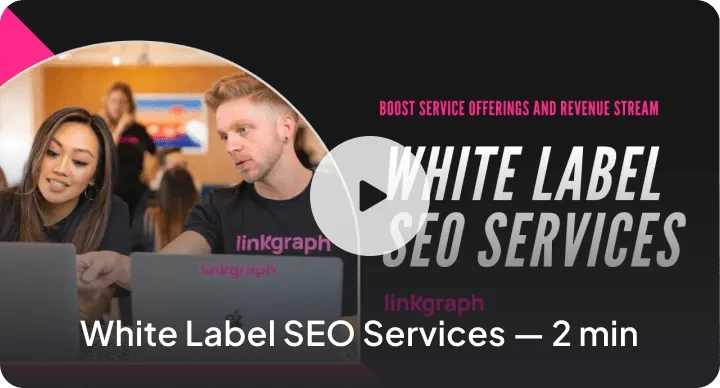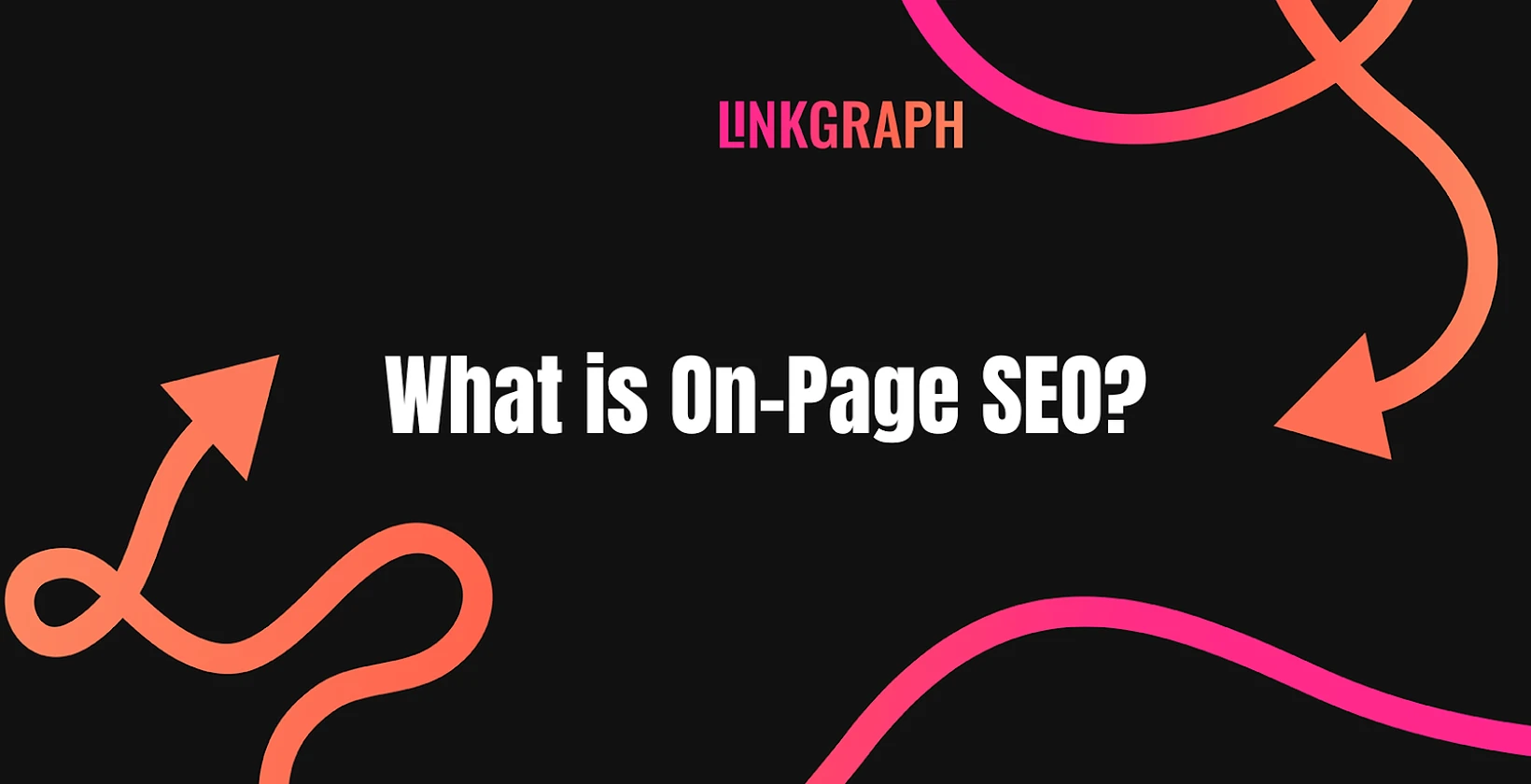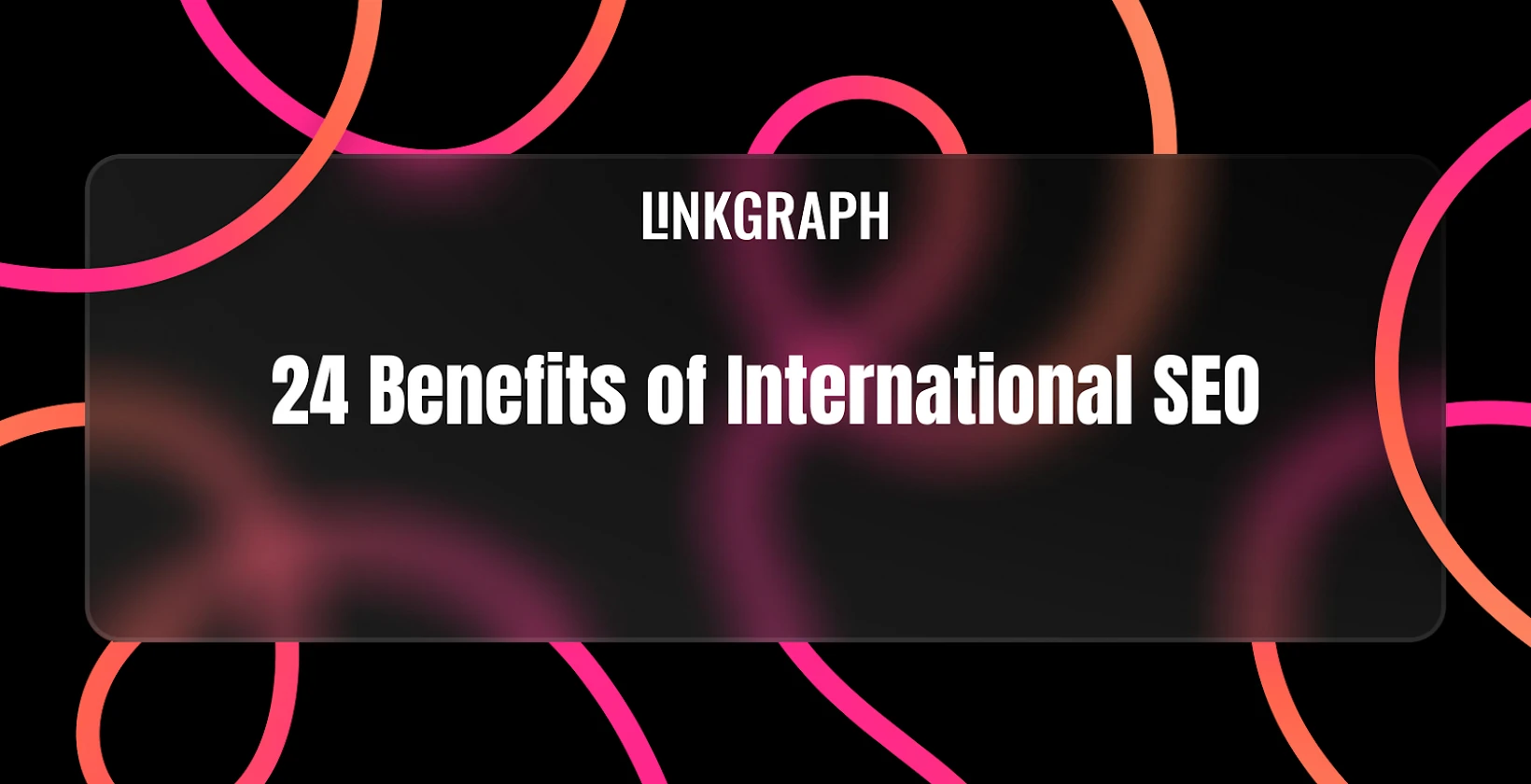What is On-Page SEO?
On-page SEO is the process of optimizing elements within a specific webpage to improve search visibility. On-page SEO enhances text, images, internal links, and HTML tags for […]
On-page SEO is the process of optimizing elements within a specific webpage to improve search visibility. On-page SEO enhances text, images, internal links, and HTML tags for better alignment with search engine algorithms. On-page SEO builds relevance by making each page more understandable to search engines and more useful for readers.
The meaning of on-page SEO lies in the effort to match user search intent with page content. On-page SEO helps search engines evaluate topics, keywords, and structure without relying on external signals. On-page SEO focuses entirely on individual pages, unlike off-page SEO or technical SEO.
The purpose of on-page SEO is to improve how pages rank for targeted queries. On-page SEO supports organic growth by ensuring that each page presents relevant information in a clear, accessible format. On-page SEO uses structured formatting, proper keyword placement, and optimized page design to meet ranking criteria.
On-page SEO is a core type of SEO used in nearly every optimization strategy. On-page SEO shapes how search engines index and rank content across competitive results. On-page SEO offers direct control, making it essential for websites aiming to improve performance.
What is the Importance of On-Page SEO?
On-page SEO improves how search engines understand individual pages, which helps increase rankings and traffic. On-page SEO shapes the structure and relevance of each page so that it appears for the right search queries. On-page SEO provides clear signals to algorithms that determine which pages meet user intent.
Higher rankings come from content that answers questions, matches keywords, and follows search engine standards. On-page SEO uses structured techniques that make each page more accessible and more valuable. On-page SEO helps websites attract targeted visitors by aligning page content with specific terms and topics.
The first three techniques that drive this process are writing unique and helpful content, ensuring content quality and relevance, and researching relevant keywords. These actions give search engines a clear reason to index and rank pages. Search engines prioritize pages that demonstrate topical clarity and user-focused value.
On-page SEO increases visibility by making each page stronger at serving its purpose. More search traffic reaches pages that are clear, structured, and aligned with keyword intent. On-page SEO builds that foundation.

What are the On-Page SEO Techniques and Factors?
On-page SEO techniques and factors refer to specific elements within a webpage that improve its ability to rank. On-page SEO adjusts both content and technical components to match search engine expectations and user needs. On-page SEO increases relevance, clarity, and accessibility of each page for better visibility in search results.
There are many techniques and factors for on-page SEO. The techniques and factors for on-page SEO have been listed below.
- Write Unique and Helpful Content
- Ensure Content Quality and Relevance
- Research Relevant Keywords
- Identify Target Keywords
- Optimize the Title Tag
- Optimize Meta Descriptions
- Optimize Headings and Page Structure
- Include a Keyword
- Integrate Relevant Keywords into Pages
- Include Target Keyword in Relevant Places
- Optimize Images
- Use Alt Tags
- Write Image Alt Text
- Create a Keyword-Rich URL
- Optimize URL Structure
- Optimize the URL
- Ensure Mobile Responsiveness
- Improve Site Speed
- Implement Internal Links
- Add External Links
- Optimize for CTR
- Use Schema Markup
- Organize Your Site
We have broken down the techniques and factors for on-page SEO below.
Write Unique and Helpful Content
Writing unique and helpful content is a content optimization technique that strengthens the informational value of a webpage. This on-page SEO technique ensures that each page delivers original, relevant, and complete information that addresses user intent.
Unique content presents ideas not found in duplicate form across other indexed pages. Helpful content solves problems, answers questions, or explains topics in ways that match what users search for. Search engines evaluate content usefulness by looking at depth, structure, accuracy, and clarity.
To apply this technique, follow the instructions below.
- Choose a specific topic with real search demand
- Avoid repeating information already published on the site
- Break down complex topics using short, clear sentences
- Use structured formatting like bullet points, headings, and short paragraphs
- Include examples, definitions, and data where possible
- Remove vague filler phrases that weaken meaning
This technique is important because it improves the content quality section of on-page SEO. Search engines reward pages that offer distinct value over similar alternatives. Pages with unique, helpful content stay indexed longer and earn more clicks from searchers.
Content optimization begins with quality. Writing useful, original information gives the page a strong foundation to rank well and serve users effectively.
Ensure Content Quality and Relevance
Ensuring content quality and relevance is a content optimization technique that strengthens how well a page meets search intent. This on-page SEO technique focuses on delivering accurate, focused, and meaningful information that fits the topic and query.
Content quality means the information is well-written, factually correct, and free from errors or filler. Relevance means the content matches the topic users expect based on the keyword or page title. Search engines assess both before deciding whether the page satisfies intent.
To apply this technique, follow the instructions below.
- Write content that stays on topic from start to finish
- Avoid generalizations and off-topic tangents
- Add supporting details, definitions, and examples that match the keyword focus
- Remove outdated information and broken references
- Use headings that match user expectations for clarity and topic flow
- Include recent data, stats, or references to improve accuracy
This technique improves trustworthiness and clarity of on-page content. It supports the ability of search engines to deliver results that solve real problems. Content lacking quality or straying from the topic often performs poorly or loses visibility over time.
Content optimization depends on quality and focus. Relevance keeps the user engaged, and clarity helps search engines rank the page correctly.
Research Relevant Keywords
Researching relevant keywords is a keyword research and content strategy technique that aligns page content with real search demand. This technique identifies specific words and phrases that users type into search engines when looking for information, services, or solutions.
Keyword research builds the foundation of a page by uncovering what topics to cover and how to structure them. The process begins by selecting a core topic, analyzing user intent, and gathering related terms through search engine data, competitor pages, and keyword tools.
Keywords must reflect the purpose of the page, match searcher language, and show clear relevance to the content. This technique is important because it guides what to write, how to phrase it, and how to make the page visible for specific queries. Keyword research improves topical focus of on-page SEO and directly influences how well a page connects to real user needs.
Identify Target Keywords
Identifying target keywords is a keyword research and content strategy technique that defines the primary terms a page will focus on. This technique selects the most valuable keywords from the broader research process, based on factors like search volume, competition, and relevance to the page topic.
The process involves analyzing which terms best match user intent, align with the purpose of the page, and offer a realistic chance of ranking. Target keywords serve as the central point around which content is written and structured.
This step is important because it prevents keyword overlap across pages and keeps content focused on one main intent. Identifying the right keywords improves clarity, helps search engines categorize pages accurately, and enhances the ability to rank. This technique strengthens on-page SEO by anchoring pages in a single, defined topic that matches how users search.
Optimize the Title Tag
Optimizing the title tag is an HTML element optimization technique that improves how search engines and users interpret the page. This on-page SEO technique targets the HTML title element, which appears as the main clickable headline in search results and inside browser tabs.
A title tag summarizes the content of the page using a short, keyword-focused phrase. It helps search engines understand the topic and helps users decide whether the page matches their query. A well-optimized title increases both rankings and click-through rate.
To apply this technique, follow the instructions below.
- Keep the title within 50–60 characters
- Place the primary keyword near the beginning
- Write a clear and descriptive phrase that reflects the content of the page.
- Avoid keyword stuffing or unnatural wording
- Use sentence case or title case for readability
- Ensure every page has a unique title tag
This technique enhances both search visibility and user engagement. The title tag serves as a strong ranking signal and often forms the first impression for users. Optimizing this element supports better indexing and improves how often a page gets selected from the search results.
Optimize Meta Descriptions
Optimizing meta descriptions is an HTML element optimization technique that improves how a page appears in search results. This on-page SEO technique focuses on editing the meta description tag to create a clear, compelling summary of the page content.
A meta description is the short snippet of text shown under the page title in search engine results. It does not directly influence rankings but strongly affects user behavior. A well-written description encourages users to click by explaining what the page offers and why it’s relevant.
To apply this technique, follow the instructions below.
- Keep the description between 150–160 characters
- Include the target keyword naturally
- Summarize the main benefit or purpose of the page
- Write in a way that matches user intent
- Avoid duplication across multiple pages
- Use active voice and clear, direct language
This technique improves the click-through rate by making the page more attractive in search results. A strong meta description supports user decision-making and signals relevance to the query. Optimizing this element strengthens on-page SEO by improving how the content is presented in the search engine results page (SERP).
Optimize Headings and Page Structure
Optimizing headings and page structure is a content and HTML optimization technique that improves both clarity and crawlability. This technique organizes the page using a logical hierarchy of headings such as H1, H2, and H3 tags, which guide users and search engines through the content.
A well-structured page uses a single H1 for the main topic, followed by subheadings that break down supporting sections in a clear order. Each heading introduces what the section covers and often includes relevant keywords without overloading them.
This improves readability for users and helps search engines understand the relationship between different parts of the content. Optimizing the structure strengthens both user experience and indexing, making it easier for the page to rank and stay competitive in search results.
Include a Keyword
Including a keyword is a content optimization technique that connects page content directly to a specific search query. This technique places the primary keyword in strategic locations across the page to signal relevance to search engines.
The keyword must match what users type when searching and must appear naturally within the text. Effective placement includes the title tag, meta description, H1 heading, opening paragraph, and one or two additional times throughout the content.
The keyword does not feel forced or overused. This technique is important because it improves how search engines interpret the topic and purpose of the page. Including the right keyword helps the page align with user intent and strengthens the ability of the content to rank. It supports the content optimization layer of on-page SEO by making the topic clear, focused, and relevant to search queries.
Integrate Relevant Keywords into Pages
Integrating relevant keywords into pages is a content optimization technique that improves topic coverage and keyword alignment. This technique involves adding secondary and related keywords throughout the content to support the primary term and broaden relevance.
These keywords reflect variations, synonyms, and subtopics that users search for alongside the main query. To apply this, include related terms naturally in headings, subheadings, paragraph text, image alt text, and internal anchor links. Each keyword must fit the context and support the flow of the content without sounding repetitive or artificial.
This approach signals to search engines that the page covers the topic in depth. Integrating relevant keywords improves on-page SEO by strengthening semantic relevance and improving chances of appearing for more queries related to the main topic.
Include Target Keyword in Relevant Places
Including the target keyword in relevant places is a content optimization technique that strengthens keyword clarity and ranking signals. This technique ensures that the main keyword appears in the most impactful sections of the page where search engines expect to find topic indicators.
These places include the title tag, H1 heading, first paragraph, meta description, and one or two body sections. The keyword must appear naturally and match the way users search for the topic. Repeating the keyword too often or placing it where it feels forced weakens the content and reduces effectiveness.
This technique is important because it highlights the topic consistently without overloading the page. Including the keyword in the right spots improves indexing and reinforces topic focus. This action supports content optimization by helping search engines evaluate the relevance of the page to the intended query.
Optimize Images
Optimizing images is a media optimization technique that improves both page performance and search visibility. This technique prepares visual content to load efficiently, display correctly, and support the topic of the page. Image optimization includes reducing file size without losing clarity, using descriptive file names, and ensuring images load responsively on all devices.
It also involves placing images near relevant text to reinforce meaning and improve user engagement. Optimized images contribute to faster loading times, which reduces bounce rates and improves user experience. This technique is important because search engines consider page speed, media relevance, and accessibility when ranking pages. Optimizing images enhances the media layer of on-page SEO by supporting visual content, improving performance, and reinforcing topical relevance.
Use Alt Tags
Using alt tags is a media optimization technique that improves image accessibility and supports search engine understanding. This technique involves adding descriptive text to the alt attribute of image HTML, which communicates image content to users who rely on screen readers and to search engines that do not view images directly.
A well-written alt tag describes the image clearly and includes a relevant keyword when appropriate. To apply this technique, write short, accurate descriptions that match the image context and avoid keyword stuffing. Alt tags help improve SEO by reinforcing the page topic and supporting content relevance. This technique is important because it enhances user accessibility, strengthens image indexing, and supports the media layer of on-page SEO.
Write Image Alt Text
Writing image alt text is a media optimization technique that improves accessibility and boosts image-based search visibility. This technique adds descriptive text to each image using the alt attribute in the HTML code. Alt text explains what the image shows so that screen readers and search engines understand its purpose.
A strong alt text description matches the image content, uses simple language, and includes a keyword if it fits naturally. Avoid stuffing keywords or repeating phrases. To apply this technique, describe the image in one short sentence that reflects its role in the content.
This improves accessibility for users with visual impairments and helps search engines connect the image to the page topic. Writing accurate alt text strengthens the media layer of on-page SEO by improving usability and supporting semantic relevance.
Create a Keyword-Rich URL
Creating a keyword-rich URL is a URL optimization technique that helps search engines and users understand the page topic before visiting it. This technique involves including the target keyword within the page URL in a way that is short, clear, and descriptive.
A keyword-rich URL uses hyphens between words, avoids unnecessary numbers or characters, and mirrors the page title or topic. To apply this technique, choose a primary keyword and build a clean, readable URL that reflects the main focus of the page. Avoid long strings, duplicate words, or stop words that add no value.
This technique is important because search engines use URLs as ranking signals, and users are more likely to click on links that look relevant. Creating a keyword-rich URL strengthens the URL layer of on-page SEO by improving both clarity and relevance in search listings.
Optimize URL Structure
Optimizing URL structure is a URL optimization technique that improves how search engines and users navigate and understand a website. This technique focuses on organizing URLs in a way that reflects the site hierarchy, keeps paths logical, and uses clean formatting.
A well-structured URL includes relevant keywords, uses hyphens instead of underscores, avoids dynamic parameters, and maintains consistency across the site. To apply this technique, create URLs that follow a clear pattern based on categories or topics, and ensure each URL is short, readable, and descriptive. Avoid unnecessary folders, numbers, or special characters.
This technique is important because a clean URL structure helps search engines crawl pages efficiently and helps users predict what each link contains. Optimizing URL structure strengthens the technical foundation of on-page SEO by improving indexability, clarity, and internal linking performance.
Optimize the URL
Optimizing the URL is a URL optimization technique that improves how search engines and users interpret the page topic. This technique ensures that each URL is concise, readable, and aligned with the content it represents. An optimized URL includes the target keyword, uses lowercase letters, and separates words with hyphens for clarity.
To apply this technique, remove unnecessary words, avoid special characters, and keep the structure simple and relevant. A good URL gives users a clear idea of the page content before clicking. This technique is important because search engines use URLs to understand context and rank relevance. Optimizing the URL supports the on-page SEO layer by improving usability, crawlability, and keyword alignment.
Ensure Mobile Responsiveness
Ensuring mobile responsiveness is a technical SEO technique that improves how a website performs across different screen sizes and devices. This technique ensures that every page adjusts layout, text, and elements to function properly on smartphones, tablets, and desktops.
A mobile-responsive page uses flexible grids, scalable images, and readable font sizes to deliver a smooth user experience without horizontal scrolling or zooming. To apply this technique, use responsive design principles, test with mobile-friendly tools, and fix any layout or loading issues flagged in Google Search Console.
This technique is important because search engines prioritize mobile usability when ranking pages, especially under mobile-first indexing. Ensuring mobile responsiveness supports the technical layer of on-page SEO by improving accessibility, user engagement, and crawl performance across devices.
Improve Site Speed
Improving site speed is a technical SEO technique that enhances how quickly a webpage loads and responds to user actions. This technique focuses on reducing delays caused by large files, inefficient code, or slow server responses.
A fast-loading page improves user experience, lowers bounce rates, and increases the chances of ranking higher in search results. To apply this technique, compress images, use browser caching, minimize CSS and JavaScript files, and implement lazy loading for media. Use speed-testing tools like Google PageSpeed Insights to identify and fix specific performance issues.
This technique is important because search engines use speed as a ranking factor and users expect quick access to content. Improving site speed strengthens the technical SEO layer by making the website more efficient, responsive, and reliable in delivering information.
Implement Internal Links
Implementing internal links is a site structure and internal linking technique that improves navigation and distributes page authority within a website. This technique involves adding hyperlinks from one page to another within the same domain, guiding users and search engines through relevant content.
Internal links help search engines discover new pages, understand site hierarchy, and establish relationships between topics. To apply this technique, link related pages naturally using descriptive anchor text, avoid excessive linking, and ensure important pages receive enough internal links.
This technique is important because it boosts crawl efficiency, enhances user experience, and helps spread ranking power across the site. Implementing internal links strengthens the site structure aspect of on-page SEO by creating clear pathways for both users and search engines.
Add External Links
Adding external links is an external linking and content credibility technique that connects a page to authoritative sources outside the website. This involves including hyperlinks to relevant, trustworthy websites that provide additional information or support the content.
External links help search engines verify the accuracy and quality of a page by showing connections to established references. To apply this technique, link to reputable sites within the industry, use descriptive anchor text, and avoid linking to low-quality or unrelated sources.
This technique is important because it enhances content credibility, builds trust with users, and improves search engine trust signals. Adding external links supports the content credibility aspect of on-page SEO by strengthening authority and relevance of the page.
Optimize for CTR
Optimizing for CTR (click-through rate) is a user experience and SERP optimization technique that increases the number of users who click on a page from search results. This technique focuses on improving elements that appear in search engine results pages, such as the title tag and meta description, to make them more appealing and relevant.
To apply this technique, craft compelling, clear titles and descriptions that include target keywords, use call-to-action phrases, and ensure snippets accurately represent page content. Optimizing for CTR means making search listings stand out and attract clicks by matching user intent and expectations.
This technique is important because higher CTR signals to search engines that the page meets user needs, which boosts rankings. Optimizing for CTR enhances the user experience and SERP presence, both critical parts of on-page SEO.
Use Schema Markup
Using schema markup is a technical SEO and structured data technique that helps search engines better understand the content and context of a webpage. This technique involves adding specific code (often JSON-LD) to HTML of a page to label information like reviews, events, products, or articles.
Schema markup allows search engines to display rich snippets, such as ratings or event dates, directly in search results. To apply this technique, select the appropriate schema type for the content, implement the code correctly, and test it with tools like Google Rich Results Test.
Using schema markup improves page visibility by enhancing search result appearance and providing clearer signals to search engines. This technique strengthens the technical SEO layer of on-page optimization by improving indexing accuracy and potentially increasing click-through rates.
Organize Your Site
Organizing your site is a site architecture and general best practice technique that improves usability and search engine crawlability. This technique structures website pages into clear categories and logical hierarchies, making it easier for users and search engines to navigate.
A well-organized site uses intuitive menus, breadcrumb navigation, and a coherent URL structure to group related content. To apply this technique, plan a simple, shallow site hierarchy, group similar topics together, and ensure every page is reachable within a few clicks from the homepage.
This technique is important because it enhances user experience by reducing confusion and helps search engines index pages efficiently. Organizing the site supports the structural aspect of on-page SEO by creating clear pathways for both visitors and search engines.
What is the difference between on-page seo and off-page seo?
On-page SEO focuses on optimizing elements within website pages, such as content, HTML tags, and site structure, to improve search engine rankings. Off-page SEO involves actions taken outside the website itself, like building backlinks, social media promotion, and brand mentions, to boost authority and trust.
On-page SEO directly controls factors that affect how search engines read and rank individual pages. It ensures content quality, keyword relevance, and technical health. Off-page SEO influences site reputation and authority through external signals, helping search engines judge overall importance and trustworthiness. Both are essential for a balanced SEO strategy but target different areas of search optimization.
What is the purpose of an on-page seo service?
The purpose of an on-page SEO service is to optimize website pages to improve their search engine rankings and user experience. This service focuses on enhancing content quality, HTML elements, site structure, and technical aspects that directly impact how search engines understand and rank each page.
An on-page SEO service analyzes and fixes issues like poor keyword usage, slow page speed, weak internal linking, and improper metadata. By addressing these factors, the service helps websites attract more relevant traffic, increase visibility, and provide a better experience for visitors. Ultimately, on-page SEO services create a strong foundation that supports long-term organic growth and competitiveness.
What is an on page seo audit?
An on-page SEO audit is a comprehensive review of individual website pages to identify issues that affect search engine rankings and user experience. The audit examines elements like content quality, keyword usage, metadata, site structure, internal linking, page speed, and mobile responsiveness.
This process helps uncover technical errors, content gaps, and optimization opportunities that might prevent a page from ranking well. An on-page SEO audit provides actionable insights to improve relevance, accessibility, and performance. Regular audits ensure the website stays aligned with search engine guidelines and adapts to changing algorithms, supporting sustained organic traffic growth.







